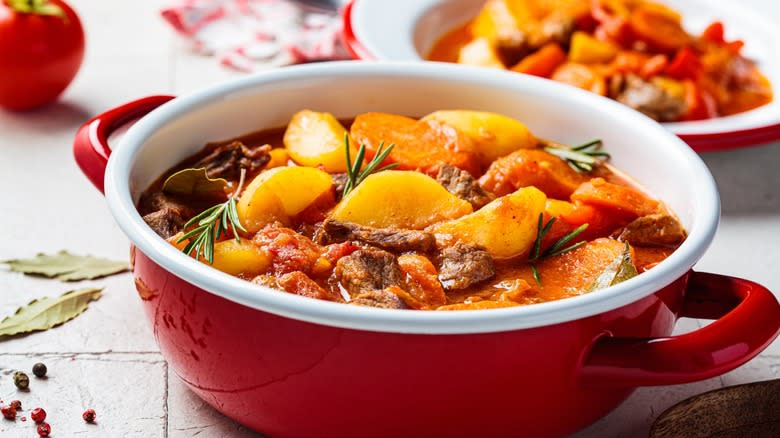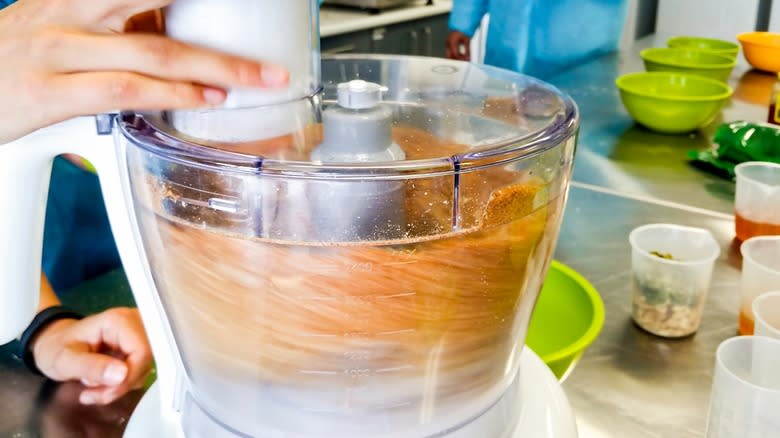Thicken Your Next Batch Of Beef Stew With A Simple Puree Technique

When you think of a good, hearty beef stew on a chilly day, one of the first things that comes to mind is its rich, thick gravy. That's what sets a stew apart from other soups and broths. But what if you find yourself with a batch that's a bit too thin for your liking? No worries, because there's a simple way to elevate your dish: Simply puree some of the stew's ingredients. This method is not just about thickening but also unlocking a depth of flavor that can transform your stew into a gourmet experience.
The secret is in the nature of the ingredients that make up your stew. Potatoes, for example, are often a key component in beef stews, and they are natural thickening agents. They contain starch, which, when released, swells and takes in liquids, resulting in a thicker consistency. When you puree part of your stew, including these potatoes, you release more of this starch into the broth, thereby naturally thickening it.
Moreover, this puree technique thickens your stew without adding external thickening agents like flour or cornstarch, which can sometimes alter the taste of your dish. By using the stew's own ingredients, you maintain the integrity of its original flavors, creating a more harmonious and satisfying dish. Now that we understand the why behind the puree technique, let's dive into the how.
Read more: The 14 Absolute Worst Mistakes You're Making With Meatloaf
Use A Blender Or Food Processor For A Thick, Creamy Consistency

First, cook your beef stew as you normally would. Remember, the stew should have a variety of ingredients, including meat, vegetables, and, importantly, potatoes. Once your stew is nearing the end of its cooking time and is still more watery than you'd like, it's time to use the puree technique. Scoop out about a cup or two of the stew, making sure to get a mix of the vegetables and liquid while leaving out the meat chunks.
Puree this mixture until it's smooth. You'll want to use a blender or a food processor for this. If you don't have either, a handheld immersion blender will work just fine. What you're aiming for is a thick, creamy consistency. Once you've got that, gently stir the puree back into the main pot of stew. As you mix it in, you'll notice the broth starts to thicken.
Allow the stew to simmer for a few more minutes after adding the puree. This crucial step helps the flavors from the puree meld with the rest of the stew, ensuring a consistent texture and taste. If you find that your stew is still not as thick as you'd like after the first puree, simply take out another small portion, puree it, and add it back in. So, the next time you find yourself with a pot of beef stew on the thinner side, try this simple technique and enjoy a more satisfying meal.
Read the original article on Tasting Table.

